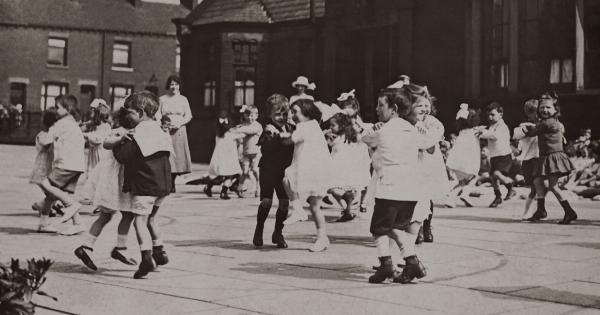Adult attention-deficit/hyperactivity disorder (ADHD) is a neurodevelopmental disorder characterized by persistent patterns of inattention, impulsivity, and hyperactivity that affects millions of adults worldwide.
While ADHD is often associated with children, it can persist into adulthood, significantly impacting daily functioning, relationships, and overall quality of life. In this article, we will explore the defining symptoms of adult ADHD and delve into various treatment options available.
Defining Symptoms
1. Inattention:.
One of the key symptoms of adult ADHD is persistent difficulty in maintaining focus or attention. Adults with ADHD may struggle to stay organized, often displaying forgetfulness, poor time management skills, and a tendency to procrastinate.
They frequently lose track of details, struggle with following through on tasks, and have trouble concentrating on activities.
2. Hyperactivity:.
While hyperactivity often decreases with age, some adults with ADHD may still experience restlessness, fidgeting, and an inability to stay seated for prolonged periods.
They may engage in excessive talking, feel restless in social situations, and find it challenging to relax or engage in leisure activities that require calmness.
3. Impulsivity:.
Adults with ADHD often have difficulty exercising impulse control. They may act without thinking, blurt out inappropriate comments, and have a tendency to interrupt others during conversations.
Impulsivity can also manifest in impatience, leading to difficulties in waiting for their turn or having trouble completing tasks that require sustained effort.
4. Emotional Dysregulation:.
Many adults with ADHD also struggle with emotional regulation. They may experience frequent mood swings, irritability, and have a low tolerance for frustration.
This emotional dysregulation can make it challenging to maintain relationships or cope with stress.
5. Executive Dysfunction:.
Executive functions, such as planning, organizing, and prioritizing tasks, can be impaired in adults with ADHD. They often face difficulties with decision-making, problem-solving, and multitasking.
It becomes challenging to initiate and complete tasks, leading to a sense of disorganization in daily life.
Evaluating Adult ADHD
A comprehensive evaluation is crucial to diagnosing adult ADHD. It typically involves:.
1. Clinical Interview:.
A clinician will conduct a thorough interview to assess the individual’s symptoms, history, and impairment in various domains of life.
They will gather information from the patient, as well as collateral sources like family members or close friends, to gain a full understanding of the individual’s symptoms.
2. Rating Scales:.
Self-report rating scales, like the Adult ADHD Self-Report Scale (ASRS), are commonly used to assess ADHD symptoms. These standardized questionnaires help quantify the severity of symptoms and aid in the diagnostic process.
3. Medical Examination:.
A medical examination is necessary to rule out any underlying medical conditions that may be contributing to the symptoms. It also involves assessing the presence of any coexisting mental health disorders.
4. Psychological Testing:.
Psychological testing may be conducted to assess cognitive functioning, executive skills, and to rule out other psychiatric conditions. These tests provide valuable insights into the individual’s overall cognitive abilities and functioning.
Treatment Options
1. Medication:.
Stimulant and non-stimulant medications are commonly prescribed for adult ADHD. Stimulant medications like methylphenidate or amphetamines may be prescribed to improve focus and reduce impulsivity.
Non-stimulant medications such as atomoxetine or bupropion may be recommended for individuals who do not respond well to stimulants or have coexisting conditions that contraindicate stimulant use.
2. Psychotherapy:.
Psychotherapy, such as cognitive-behavioral therapy (CBT), can help adults with ADHD develop coping strategies, improve time management, and enhance organizational skills.
It also focuses on managing emotions and addressing any comorbid conditions like anxiety or depression that may exacerbate ADHD symptoms.
3. Education and Skill Building:.
Adult ADHD can greatly benefit from psychoeducation and skill-building programs. These programs aim to increase knowledge about the disorder, develop effective coping mechanisms, and teach strategies to improve daily functioning and productivity.
4. Lifestyle Changes:.
Implementing lifestyle changes can significantly impact the management of adult ADHD. Regular exercise, a healthy diet, and sufficient sleep contribute to better overall well-being and can help reduce symptoms.
Additionally, creating structure and implementing organizational techniques can facilitate improved focus and productivity.
Coping Strategies
1. Prioritization:.
Breaking down tasks into smaller, manageable steps and prioritizing them can help individuals with ADHD focus on completing one task at a time without feeling overwhelmed.
2. Time Management:.
Using timers, alarms, or smartphone apps can assist in staying on track and managing time effectively. Establishing routines and dedicating specific time slots for various activities can also enhance productivity.
3. Organization:.
Implementing organizational techniques such as using calendars, to-do lists, and other visual aids can improve memory, reduce forgetfulness, and ensure important tasks or appointments are not overlooked.
4. Support System:.
Building a support system comprising family, friends, or support groups can provide emotional support and understanding.
Sharing experiences and strategies with others who have ADHD can be helpful in navigating the challenges associated with the condition.
Conclusion
Adult ADHD is a complex and often misunderstood neurodevelopmental disorder. Understanding its defining symptoms and seeking proper evaluation and diagnosis are crucial steps towards effective management.
Treatment options, including medication, psychotherapy, education, and lifestyle adjustments, can significantly improve the daily functioning and quality of life for adults with ADHD. By implementing coping strategies and accessing appropriate resources, individuals with adult ADHD can learn to manage their symptoms and thrive in various facets of life.





























